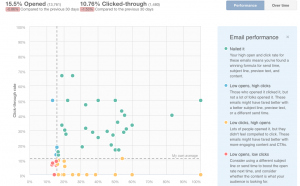From 2011 to 2013, the percentage of Standard and Poor’s 500 companies publishing environmental, social, and governance (ESG) reports rose from 20 percent to 72 percent. The message was clear: Disclosing information on sustainability performance is no longer just a way for business leaders to get ahead of the competition; it’s a requirement to avoid falling behind.
Investors today demand more than clean balance sheets and quality products. Today, the product is only as good as the production methods behind it; if it’s not sustainable, it might not fly. Cutting waste and improving efficiency are easier said than done, but one of the largest sources of waste in business is also one of the simplest to reduce: printing.
To manage print, you need to address employee habits
Business leaders spend 1 to 3 percent of their annual revenue on printing but often don’t realize it. When presented with their actual enterprise printing data, they quickly recognize the opportunity to create significant positive change.
To solve the printing problem, executive leadership must address the demand side of the equation: The solution to overprinting must begin with the people who choose to print.
Many business processes still require printed documents, but for the most part, office printing remains a habit of convenience. When people have access to printers, they print. And printing is far more expensive than most people realize.
It’s not as simple as separating employees from their personal printers, which are by far the most expensive types of printing device. Movement toward more sustainable printing habits requires an understanding of your organization’s current state as well as a comprehensive strategy to get you to your desired future state. To create lasting results, business leaders must be ready to change more than the layouts of their copy rooms.
Steps to achieve a more sustainable print environment
To minimize your organization’s environmental impact while significantly reducing costs associated with printing, follow these four simple steps.
1. Acquire data.
An effective print strategy starts with acquiring comprehensive, vendor-neutral data on your organization’s printing hardware and habits. You need to know who is printing what, when, where, and why. Print management software makes this process fairly easy.
The right solution can reveal everything there is to know about your company’s printing, including which departments and individuals print the most and how many of those documents are actually business-critical.
2. Work with an expert.
A print expert can fill in knowledge gaps, help interpret your data, and put that data to use in the most efficient way. Your solution provider can walk you through the software installation and work with you to design a data-driven print strategy to establish smarter workflows and better resource management.
For example, if your reports show many documents being printed from web browsers, you can assume that much of this is not business-critical printing and introduce policies to curtail the unnecessary volume.
3. Educate the workforce.
After you use your data to reveal how people in your organization print, you can begin to align strategic goals with new policies and ongoing communication efforts. Get your marketing team involved to engage and inform all employees about the company’s cost-savings and sustainability goals — and the roles they play in achieving those goals.
People generally want to do the right thing, and we find that employees are usually eager to participate in these initiatives when they understand the costs associated with each decision to print.
4. Eliminate unnecessary devices.
Depending on the size of your organization, part of your strategy may include consolidating printers. Many companies have far more than they need, especially if they allow personal printers.
Furthermore, most businesses have underutilized devices around the office that hide operational costs. When you can look at reports and see that many expensive investments aren’t being used, it becomes clear how important it is to properly evaluate how employees print and what their actual business needs are.
Has your business benchmarked its printing hardware and habits against industry best practices to reduce the mindless consumption of resources related to printing? What do you think the results would be if you did?
Business & Finance Articles on Business 2 Community(29)








